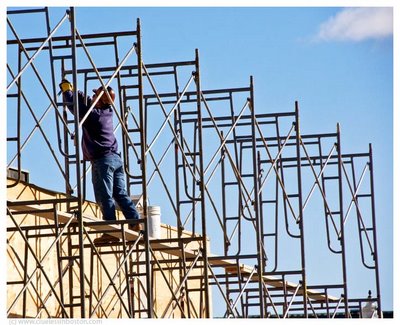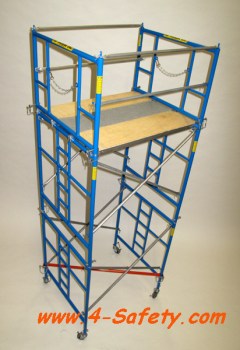Top-Notch Scaffolding Near Me: Expert Solutions for Every Job
Top-Notch Scaffolding Near Me: Expert Solutions for Every Job
Blog Article
Discovering the Different Sorts Of Scaffolding Made Use Of in Construction Projects
The building and construction sector counts greatly on various sorts of scaffolding to meet particular project demands, each offering unique advantages and applications. Conventional frame scaffolding offers a durable foundation for basic jobs, while put on hold scaffolding is essential for service high-rise frameworks. Various other alternatives, such as system and rolling scaffolding, accommodate performance and flexibility, specifically. In addition, the cantilever alternative confirms very useful in metropolitan settings where area is constrained. Recognizing the subtleties of these scaffolding types is vital for enhancing safety and efficiency on building websites, triggering a closer exam of their distinct qualities and applications.

Conventional Frame Scaffolding
Conventional framework scaffolding is just one of one of the most widely used techniques in the building and construction industry because of its toughness and adaptability. This system is composed of horizontal and vertical frames that are assembled to produce a steady platform for employees and materials. The primary components consist of upright blog posts, straight ledgers, and diagonal braces, which with each other supply a solid framework that can sustain considerable lots.
One of the essential advantages of typical framework scaffolding is its adaptability to various building and construction jobs, ranging from domestic structures to huge industrial frameworks. The modular design permits simple setting up and disassembly, making it effective for both temporary and long-lasting jobs. Additionally, the system can be tailored in height and width, suiting different structure designs and website conditions.
Safety and security is critical in scaffolding applications, and typical frame systems are outfitted with guardrails and toe boards to stop drops and guarantee employee security. Regular examinations and adherence to security policies are vital in keeping the stability of the scaffold (Scaffolding). Generally, typical frame scaffolding continues to be a fundamental option in the building and construction sector, offering a reliable platform for labor and enhancing general task performance

Suspended Scaffolding
Suspended scaffolding provides a special remedy for building projects that call for access to elevated surfaces, specifically in circumstances where standard frame scaffolding might be not practical. This kind of scaffolding is generally suspended from the roof covering or upper degrees of a framework, utilizing a system of ropes, platforms, and wheels to develop a working room that can be adapted to various elevations.
Among the main benefits of suspended scaffolding is its adaptability. It can be quickly rearranged or reduced to suit modifications in building and construction requirements, making it excellent for tasks such as home window setup, façade job, and maintenance on skyscrapers. Furthermore, the marginal footprint of put on hold scaffolding permits for better usage of ground room in urban settings, where room is typically minimal.
Security is an important consideration in the usage of put on hold scaffolding. Overall, suspended scaffolding provides a reliable and effective solution for accessing hard-to-reach areas in numerous building and construction situations, enhancing both performance and safety on site.
System Scaffolding
System scaffolding, frequently considered as a modern remedy in the scaffolding industry, contains pre-engineered parts that can be promptly assembled and adjusted for numerous building jobs. Scaffolding. This kind of scaffolding is identified by its modular design, which allows for convenience and effectiveness on task sites, suiting different elevations and structural requirements
Normally made from high-strength steel or light weight aluminum, system scaffolding supplies enhanced toughness and security. The components consist of vertical messages, straight journals, and angled dental braces, which adjoin safely, guaranteeing a durable structure. The style usually dig this incorporates standard fittings, streamlining setting up and disassembly procedures, therefore reducing labor time and costs.

Rolling Scaffolding
Moving scaffolding is a versatile alternative to conventional fixed scaffolding, developed for wheelchair and convenience of use on building and construction sites. This sort of scaffolding contains a system supported by frames with wheels, enabling employees to easily transfer it as required. The mobility feature considerably boosts efficiency, as it decreases downtime related to taking apart and putting together repaired scaffolding.
Normally built from lightweight materials such as light weight aluminum or steel, rolling scaffolding uses a sturdy yet mobile service for tasks requiring constant repositioning - Scaffolding. It is especially helpful in tasks such as paint, drywall installation, and electrical job, where access to various elevations and places is necessary
Safety and security is critical in rolling scaffolding style, with attributes such as locking wheels i was reading this to stop unintended activity when in operation, and guardrails to secure workers from drops. In addition, many versions are adjustable in height, accommodating various job requirements.
Cantilever Scaffolding

The design of cantilever scaffolding typically entails utilizing brackets or arms anchored to a building or structure, enabling the platform to expand outside securely. Safety is vital; thus, these scaffolds should be engineered to hold up against different loads and ecological problems. Regular evaluation and upkeep are vital to make sure structural honesty and worker security.
Cantilever scaffolding is favored for its convenience and reliable use area, making it a prominent selection in metropolitan settings where area restrictions are common. It helps with much easier accessibility to high altitudes, inevitably adding to the overall efficiency of building jobs. As with all scaffolding kinds, correct training and adherence to security criteria are essential for workers utilizing cantilever scaffolding.
Verdict
To conclude, the varied kinds of scaffolding made use of in building projects each offer unique objectives tailored to specific site requirements. Conventional structure scaffolding gives security, while put on hold scaffolding provides flexibility for raised tasks. System scaffolding promotes quick assembly, and rolling scaffolding boosts flexibility for varying workplace. Cantilever scaffolding successfully deals with challenges in city settings. Recognizing these scaffolding types is essential for optimizing safety and performance in building and construction, ultimately adding to the successful conclusion of projects.
Typical framework scaffolding gives a durable foundation for general jobs, while suspended scaffolding is crucial for job on skyscraper frameworks.Moving scaffolding is a flexible choice to standard set scaffolding, made for mobility and convenience of use on building and construction sites. As with all scaffolding types, correct training and adherence to security requirements are important for workers utilizing cantilever scaffolding.
Conventional frame scaffolding provides security, while suspended scaffolding provides adaptability for raised jobs. System scaffolding facilitates fast setting up, and rolling scaffolding improves wheelchair for varying work environments.
Report this page